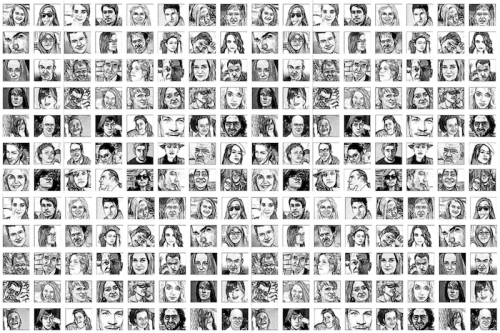Podcast: Play in new window | Download
Subscribe: Apple Podcasts | Android | RSS

Today’s interview is with Rie Nørregaard, a Managing Creative Director of SY Partners, a consultancy based in New York and San Francisco. For 20 years, they’ve helped business leaders, teams, and individuals pursue growth and greatness. Rie has recently started a podcast: Designing for Humanity, which aims to explore designing a future that’s made for all of us—and the best in us. They also say that design, at its heart, is an act of service and is the work of solving problems for the benefit of others. That description alone got me interested and so I invited Rie onto the podcast so you can learn more about her podcast and we can learn more about she is discovering around what it means to design for humanity and how that impacts service, experience and engagement.
This interview follows on from my recent interview – Convenience helps you stand out and creates fierce loyalty – Interview with Shep Hyken – and is number 281 in the series of interviews with authors and business leaders that are doing great things, providing valuable insights, helping businesses innovate and delivering great service and experience to both their customers and their employees.
Here’s the highlights of my interview with Rie:
- Rie is focused on how do we create transformation through inclusion.
- She is finding that the definition of the conversation around inclusive design is, perhaps, not expansive enough for the very large scale systemic problems that we face.
- Hence, she started a new podcast called Designing For Humanity to explore this and to try and find out what might be required of a new design frame that takes into account design on global scale.
- Design is a method to creatively solve problems, particularly in the service of others.
- Expression and beauty are dimensions of design.
- When we say that we make products for everyone or we say everyone could be my customer, are we being inclusive? Can we consider everyone’s needs?
- To be truly inclusive, what conditions would need to be true for us to be able to think about the problem and how to solve it?
- There’s a link between design and humanity.
- What are the consequences of designing something: intended and unintended?
- Design and the way we are going about it is not expansive enough.
- We need to think about the consequences of design decisions that we’re making, particularly when we are designing solutions on a very large scale, where we can understand fairly quickly the effect of the decisions that we make on people, markets and places that are not necessarily in our purview.
- This is a complicated issue and was the reason that Rie started her podcast…..to both investigate this issue and be inclusive in her investigation.
- She highlights a series of interviews she has done:
- Episode 3: When a designer meets a social worker, with Tucker Viemeister, the famed industrial designer.
- His father was an industrial designer and his mother was a social worker and that really informs how he looks at design.
- Tucker: “Design is how we treat each other.”
- Everything around us is design, by design.
- True communication is the response we get
- Episode 2: Building a runway for change in fashion, at 3’5”, with Sinéad Burke the writer, activist, and fashion enthusiast.
- She has a column in British Vogue and she talks about how design has impacted her life, particularly as she stands three and a half feet tall.
- Design and fashion is an amazing vehicle for transformation in the sense that that fashion can help us change our idea of what beauty is.
- Other episodes she mentions:
- Episode 5: Blockchain, escape rooms, and small experiments: designing for equity in education, with Laura McBain, the co-director of the Stanford d.school K12 Lab, who is exploring how to disrupt inequity in the classroom and unleash creative confidence in educators.
- Episode 4: A professional “catastrophizer” brings creativity to crises, with Gabby Almon, a trusted advisor to government, philanthropic, and tech sector leaders; a member of FEMA’s National Advisory Council; and Founder of Rise of the Bulls — a changemaker network and laboratory.
- Episode 1: Time for tech to get inclusive, with Kat Holmes, a pioneer of inclusive design, previously at Microsoft and currently as founder at Kata. She has just authored a new book: Mismatch: How Inclusion Shapes Design. Check it out here.
- Episode 3: When a designer meets a social worker, with Tucker Viemeister, the famed industrial designer.
- Much of this is related to the emergent discipline of systemic design which smashes together systems thinking and design thinking.
- This is helped with the addition of storytelling, which is an essential vehicle and catalyst for change.
- To be more inclusive in our approach, we need to start thinking about who is in the room and what perspectives we are missing.
- Think also about what and where you are taking inspiration and learning from.
- Consider the legacy of Buckminster Fuller and his idea of bio-mimicry, the imitation of the models, systems, and elements of nature for the purpose of solving complex human problems.
- Look adjacently for opportunities to learn.
- To tackle these problems and challenges more inclusively, think about who is thinking about these challenges with you.
- Consider also that we are also the work that we do and how we treat each other, the dynamics of our teams, the conditions needed for us to actual make the best solution possible, how we work together…..all of this should be considered.
- When we do then that will help us change our minds about what design is.
- Where does transformation happen in organisations?
- If the company makes products then the best way to change the culture of the organisation is to change how the product is made.
- Check out Rie’s podcast: Designing for Humanity.
About Rie
 Rie Nørregaard, a Managing Creative Director of SY Partners, a consultancy based in New York and San Francisco. For 20 years, they’ve helped business leaders, teams, and individuals pursue growth and greatness.
Rie Nørregaard, a Managing Creative Director of SY Partners, a consultancy based in New York and San Francisco. For 20 years, they’ve helped business leaders, teams, and individuals pursue growth and greatness.
Rie is passionate about design as an act of service—from designing more inclusive organizations to reimagining how an ordinary product, such as a cane, can become extraordinary for the person who uses it.
At SYPartners, Rie serves as a Managing Creative Director, helping clients envision and build a future that’s made for all of us—and the best in us. Previously, Rie co-founded and was CEO of Omhu, and worked as a creative director at leading design firms, such as Smart Design, Organic, Quirky, and Frog Design, and has designed solutions for brands including: American Express, Chanel, Cisco, HP, Johnson & Johnson, Microsoft, Nike, OXO, TED, Vogue, Samsung, GE, and Mattel.
Outside of her role as Managing Creative Director in San Francisco, Rie is an advisor to several tech and consumer product start-ups, and is a frequent speaker in the international design and design education communities. Rie trained as a communication designer in Copenhagen, Denmark and lives in San Francisco with her family.
Check SYPartners.com, Rie’s podcast: Designing for Humanity, say Hi to SY partners on Twitter @SYPartners and connect with Rie on LinkedIn here.



